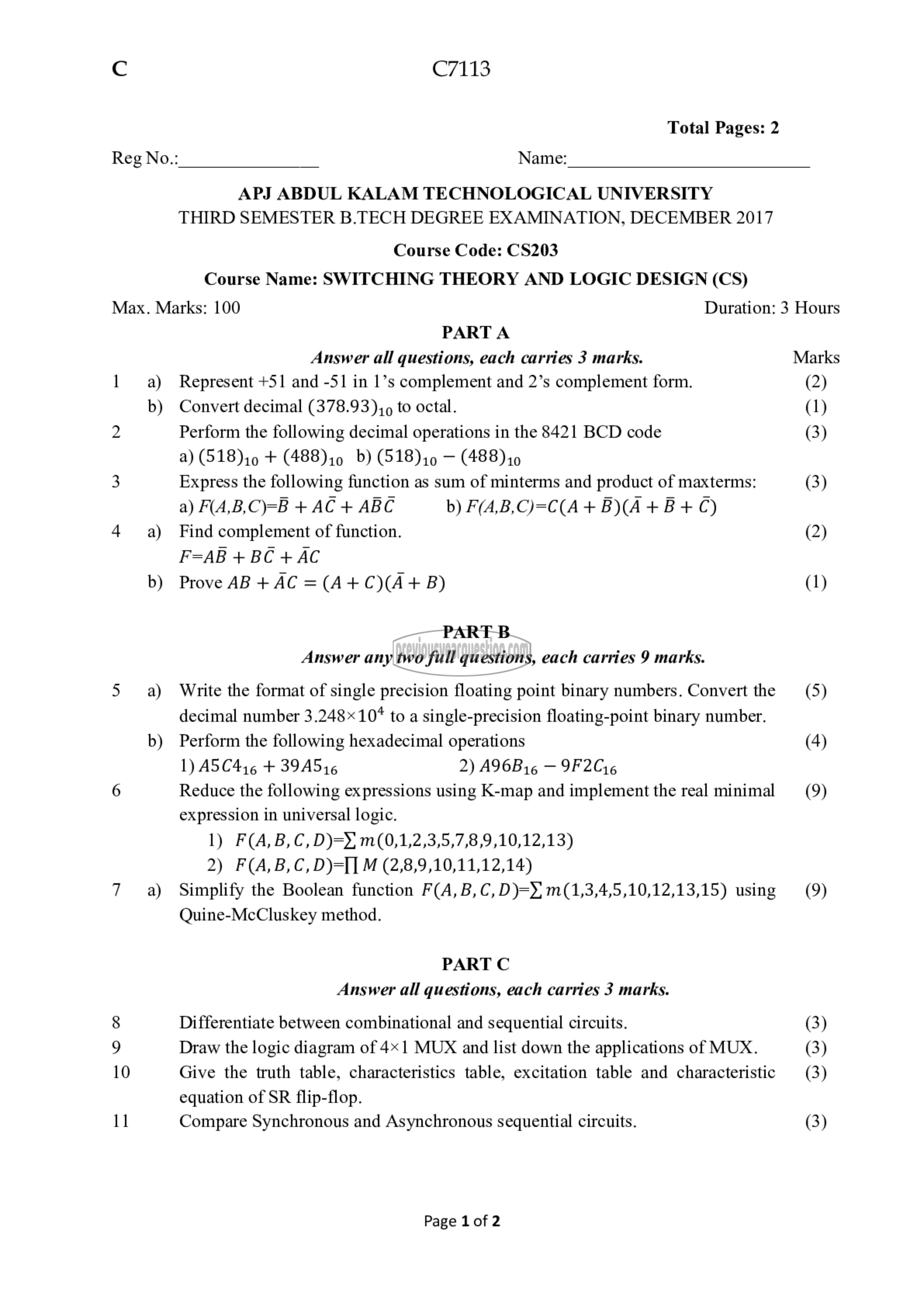APJ ABDUL KALAM TECHNOLOGICAL UNIVERSITY Previous Years Question Paper & Answer
Semester : SEMESTER 3
Subject : Switching Theory and Logic Design
Year : 2017
Term : DECEMBER
Branch : COMPUTER SCIENCE AND ENGINEERING
Scheme : 2015 Full Time
Course Code : CS 203
Page:1
(0 C7113
Total Pages: 2
Reg No.: Name:
APJ ABDUL KALAM TECHNOLOGICAL UNIVERSITY
THIRD SEMESTER B.TECH DEGREE EXAMINATION, DECEMBER 2017
Course Code: CS203
Course Name: SWITCHING THEORY AND LOGIC DESIGN (CS)
Max. Marks: 100 Duration: 3 Hours
PART A
Answer all questions, each carries 3 marks. Marks
1 9) Represent +51 and -51 in 1’s complement and 2’s complement form. (2)
b) Convert decimal (378.93), to octal. (1)
2 Perform the following decimal operations in the 8421 BCD code (3)
a) (518)19 + مر(488) 9) (518) - (488) 10
3 Express the following function as sum of minterms and product of maxterms: (3)
a) F(A,B,C)=B + AC + ABC b) F(4,B,C)=C(A+ B)(A+B+C)
4 a) Find complement of function. (2)
F=AB+BC+AC
زا Prove AB + 4८ = (A+C)(A+B) (1)
PART B
Answer any two full questions, each carries 9 marks.
5 9) Write the format of single precision floating point binary numbers. Convert the (5)
decimal number 3.248*10* to a single-precision floating-point binary number.
b) Perform the following hexadecimal operations (4)
1) 45 ८416 + 394515 2) 4968516 — 92८16
6 Reduce the following expressions using K-map and implement the real minimal (9)
expression in universal logic.
1) F(A,B,C, D)=¥ m(0,1,2,3,5,7,8,9,10,12,13)
2) 7 (4, 5, ८, 2) [ M (2,8,9,10,11,12,14)
7 2) Simplify the Boolean function F(A, B,C, D)=¥, m(1,3,4,5,10,12,13,15) using (9)
Quine-McCluskey method.
PART C
Answer all questions, each carries 3 marks.
8 Differentiate between combinational and sequential circuits. (3)
Draw the logic diagram of 4x1 MUX and list down the applications of MUX. (3)
10 Give the truth table, characteristics table, excitation table and characteristic (3)
equation of SR flip-flop.
11 Compare Synchronous and Asynchronous sequential circuits. (3)
Page 1 of 2
